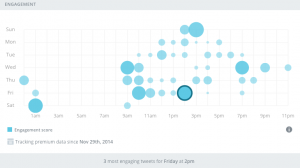Companies that are truly customer-focused make it as easy as possible for people to interact with them. Today that often includes having a presence on social media. Though many companies have set up their social presence, not every company is using social media effectively. Too often brands focus their social media strategy on pushing content out and driving a particular narrative–paying less attention to what their customers have to say. A recent Brandwatch study found that 25 percent of the world’s biggest brands use social media solely as a broadcasting channel.
Yes, Twitter and Facebook are public forums and these are scary places to have customers air their grievances. But when supported correctly, they also represent a terrific opportunity for brands to engage in a dialogue with customers and build brand loyalty.
To help craft your social media strategy, here are three tips:
Set clear expectations with customers and internal stakeholders
Teams should develop a consistent vision and ensure all customer service agents are on the same page. How quickly are agents expected to respond to inbound tweets? What are support agents allowed to offer customers who complain? When and how should tweets be redirected to a different channel? Will your company establish a separate Twitter handle or Facebook account specifically for customer service? Will your company offer 24-hour social media support or will reps just respond to tweets during certain times throughout the day?
In the absence of explicit expectations, customers will assign their own and they may not be achievable. Establishing expectations and making them clear to customers will make stellar customer support easier from the offset. Support reps will be empowered and know what to expect when customers reach out for help.
Project authenticity and empathy
Consumers like to know that they are dealing with empathetic professionals, so don’t be afraid to add some personality to your social responses. Companies that hone their brand’s identity through their social media are often the most successful at retaining customers.
UPS builds personal connections by posting photos of the support team on its Facebook and Twitter feeds. This tactic shows customers that they are working with real people and helps place a face behind a tweet. This personal approach leads to friendlier interactions between support reps and customers, because it’s harder to be rude when customers feel like they are talking to real people. Another best practice is to ask support agents to add short signatures to their tweets. This way consumers know they aren’t just being tweeted at, they are being spoken to and by a support rep who cares.
Use technology that makes it easier to manage inbound requests
According to a recent survey by The Social Habit, 32 percent of social media users who contact a brand expect a response within 30 minutes and 42 percent expect a response within an hour. Your help desk can watch Twitter for you, create tickets automatically and alert you when a customer complains publicly, so you don’t need to staff someone to watch Twitter 24×7.
We’ve seen our own customers take advantage of this opportunity. Pearson, one of the biggest publishing houses and learning companies in the world, realized that authors and support agents needed access to the company’s social media channels so they could reach their customers wherever they go.
By utilizing the Freshdesk platform, Pearson made sure that every inbound customer complaint coming through their social channels was categorized, prioritized and assigned to the right support agent or author automatically, despite dealing with hundreds of publications and authors. Authors had direct access to Pearson’s social media sites to engage with consumers, allowing them to reach a far wider audience during important launch days. The platform allowed the team to carry their conversations with customers in Twitter and Facebook over to their support portal to directly engage with them all in one place.
Creating a standardized, friendly approach through service platforms will help organizations improve their social media support. Customers will start to receive the kind of thoughtful, organized and instantaneous service they have come to expect. Brands that listen to their customers and respond to them in the channels they are present in and care about, will see improved customer retention and satisfaction.
(212)






